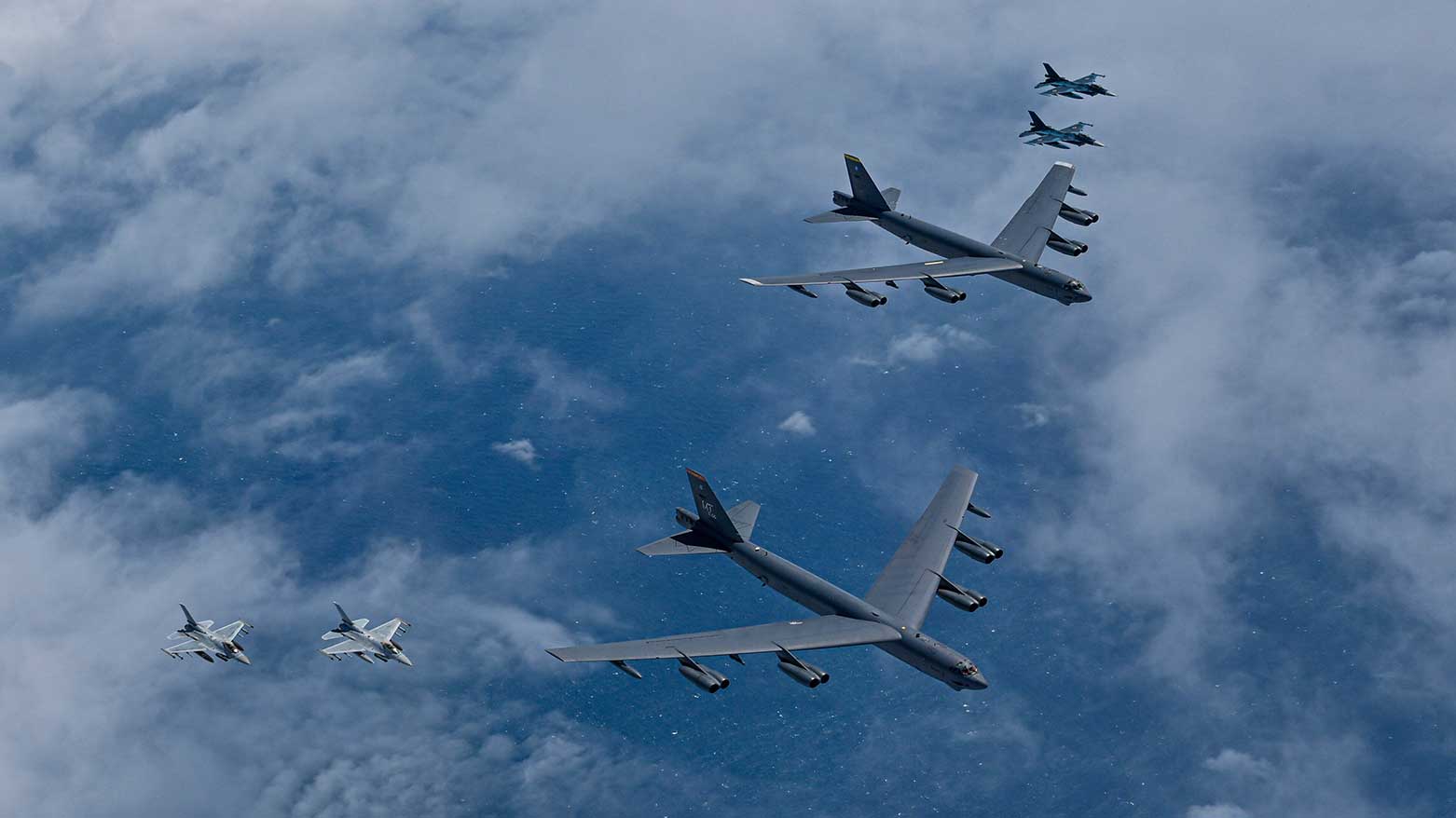U.S., South Korea, and Japan Launch Major Joint Drill Condemned by North Korea
Kim Yo Jong, the influential sister of leader Kim Jong Un, warned in state media that the drills underscored a “confrontational stance” toward the North, denouncing it as a “reckless show of strength.”

ERBIL (Kurdistan24) — The United States, South Korea, and Japan began a large-scale air and naval exercise off South Korea’s southern Jeju Island on Monday, in a show of trilateral defense cooperation that North Korea denounced as a “reckless show of strength.”
The five-day exercise, dubbed Freedom Edge, is designed to strengthen the allies’ combined operational capabilities across sea, air, and cyberspace. South Korea’s Defense Ministry said the drills are necessary to counter North Korea’s advancing nuclear and missile arsenal.
The U.S. Indo-Pacific Command noted that the training will feature U.S. Marine and Air Force assets, enhanced ballistic missile and air-defense drills, medical evacuations, and maritime operations, calling it “the most advanced demonstration of trilateral defense cooperation to date.”
North Korea, however, quickly lashed out. Kim Yo Jong, the influential sister of leader Kim Jong Un, warned in state media that the drills underscored a “confrontational stance” toward the North.
“The reckless show of strength made by them in real action in the vicinity of the DPRK, which is the wrong place, will inevitably bring bad results to themselves,” she said, using the initials of the country’s official name, the Democratic People’s Republic of Korea.
Kim also condemned the separate Iron Mace tabletop exercise between Washington and Seoul, which reportedly overlaps with Freedom Edge and focuses on integrating U.S. nuclear and South Korean conventional capabilities.
While neither military confirmed details, AP noted that Pyongyang has often responded to such maneuvers with weapons tests or its own military demonstrations.
Efforts by Washington and Seoul to resume negotiations aimed at curbing North Korea’s weapons programs have repeatedly been dismissed by Kim Jong Un, who has instead prioritized foreign policy outreach to Russia and China.
Since the start of Moscow’s war in Ukraine, North Korea has supplied thousands of troops and shipments of artillery and ballistic missiles to bolster President Vladimir Putin’s forces.
Earlier this month, Kim also traveled to China, where he stood alongside President Xi Jinping and Putin during a grand military parade, underscoring his bid to strengthen ties with nations challenging U.S. influence.
In a related diplomatic shift, U.S. President Donald Trump recently warned that the United States has “lost India and Russia to deepest, darkest China,” following high-profile meetings between Xi, Putin, and Indian Prime Minister Narendra Modi.
His remarks highlighted the growing concern in Washington that Beijing is pulling major powers into its orbit at the expense of Western influence.
The timing of such rhetoric coincides with the U.S. push for stronger trilateral military cooperation in Asia. Exercises like Freedom Edge are not only about deterring North Korea but also about sending a broader signal that Washington, Seoul, and Tokyo intend to hold their ground in the face of an evolving bloc of countries aligning with China.
India, for its part, has rejected some of Trump’s accusations as “unjustified and unreasonable,” while also facing U.S. trade tariffs linked to its energy ties with Russia.
These tensions reflect how the competition among global powers now extends beyond military maneuvers, encompassing economic tools and shifting alliances in a multipolar world.
